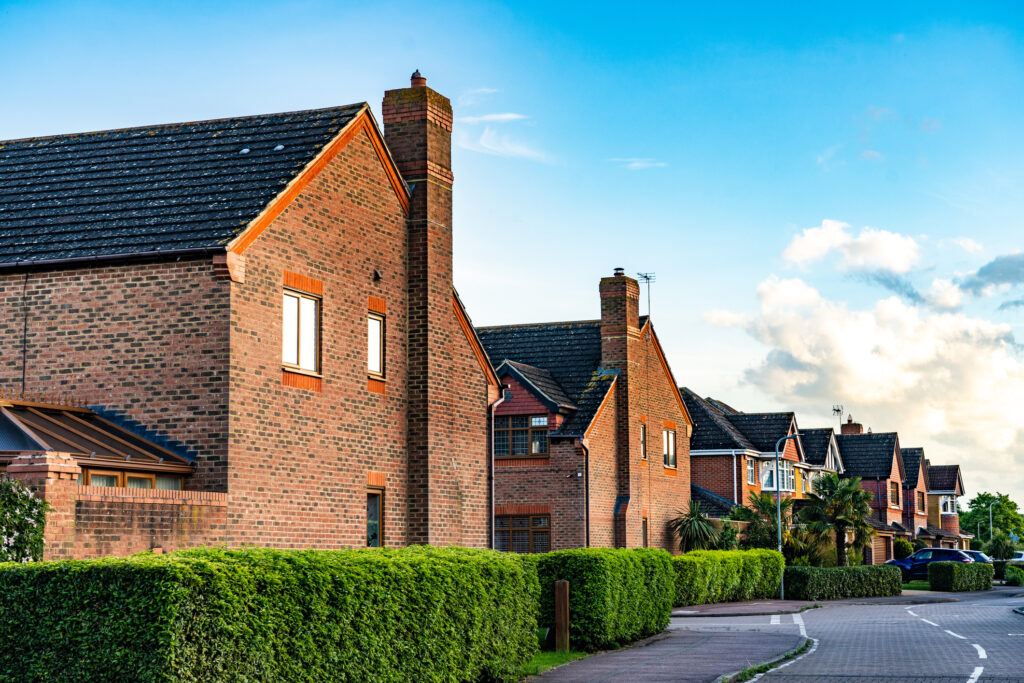
“Charity Bank brought calm at a chaotic time.”
What better way to celebrate your 125th anniversary than with a new property that gives you space to enrich lives and bring community together? That’s exactly what Mosaic 1898 has done, with the help of a Charity Bank loan. CEO Zoheb Shariff tells us more.
Why did you need a Charity Bank loan?
We were on the lookout for a property in Leicestershire, something that would bring our vision to create a disability-friendly community hub to life. The Whetstone Baptist Church buildings were just the thing we’d been looking for. Made up of a stunning chapel, a spacious community hall, and a roomy three-bedroom house, these buildings would be a catalyst to further our work to enhance the lives and building community. All that was left to do was crunch the numbers and raise the funds.
Is there any way you could have bought and renovated the properties without a loan?
No, it just wouldn’t have been feasible.
Why did you choose Charity Bank for your loan?
Charity Bank were one of the lenders that caught our eye early on, they came recommend by one of our team. We loved Charity Bank’s purpose and mission, we then looked at their impact, without question a bank for good – their values aligned with ours, and that’s important to us. Put that together with their professionalism, experience, and excitement for our project, in the end it was an easy choice.
How did you find the process of getting the loan?
It was a time of uncertainty in the economy, we were nervous, the ever-increasing interest rates, fixed rate products vanishing from the market, it all felt a little uneasy, at times a little overwhelming. Charity Bank were impeccable, throughout. They provided us with the right information, at the right time, and at the right pace.
Stacey Goodrich and Mark Herbert created a calm in all the chaos. They set out the process clearly at the outset, kept us in the know at all times, and were on-hand when we needed their support.
While our purchase of the buildings was not without its delays, challenges, and legal complexities; the process of getting the loan was made to feel almost effortless. We knew where we stood, what to expect next, and what if anything we needed to do, that clarity made all the difference.
What have been the main challenges to buying and renovating the properties?
Buying and renovating a heritage building has been quite the learning curve, its ever so more complex trying to build accessibility and inclusive environments for disabled people in older historic properties. That’s why we’ve been taking our time to get the plans and designs just right.
We were expecting this challenge, we went in eyes wide open, and I think we’ve found a nice balance between creating a disability-friendly space and preserving the heritage of the buildings. We’re now in the final phases of planning with building works to start very soon.
Was there anything you weren’t expecting?
We were expecting to have a loan on a fixed rate, however the instability in the markets meant that wasn’t possible. We worked with Charity Bank to explore the variable rate options, we ran the numbers, then we ran them again to be sure of our affordability and sustainability. Stacey and Mark were on-hand again, being able to openly talk it all through with Charity Bank was invaluable.
What would you say to a charity that’s thinking of taking out a loan for a new project?
Talk to Charity Bank, the sooner the better. Getting their professional support early on helped us come to a better understanding of how it all worked, what’s on offer, what it truly cost, and what it meant for the financial sustainability of our project, it even helped bust a few myths and misconceptions.
In the early conversations ask hordes of questions, run and rerun your numbers, and always check your charity’s constitution for any restrictions or conditions when it comes to borrowing and loans.
Can you tell us more about the new project?
Absolutely, our vision is to develop and renovate the buildings to create an all-encompassing disability-friendly hub for the local community in the heart of Blaby District in Whetstone, Leicestershire.
We’re excited to be starting this work on the 125th anniversary of our charity.
The chapel will become a vibrant space for the community to come together, get involved in activities, and access support. The house is being converted into an around the clock respite care facility providing non-nursing short breaks for disabled people and those with complex needs. And the community buildings are being transformed into a truly accessible and equipped space complete with sensory rooms and changing places, for our charity to do even more for disabled people.
The project will clearly benefit the people you work with, but would you say it’ll also benefit the charity as a whole?
Yes, I would say so. We’ve forecasted the project to be self-sustaining within three-years and the added potential to create some new revenue, that’ll help solidify our financial stability and secure a long-term future – and with that we can grow and invest in our people, improve the way we work, and play our part in making our communities a little more accessible to all.
It also opens the door for us to better respond to the needs of disabled people, it gives us the means to develop new care and support services. We reach more than 2500 disabled people through our work and thousands and thousands more who are caregivers. Through this project we’ll do so much more for those people and hopefully reach many more. The new spaces will also empower us to advocate for positive change for disability nationally.
Why are you expanding into respite care?
Well, we exist to deliver the support and care that disabled people want and need. Respite Care or sometimes referred to as Short Breaks is an unmet need in Leicestershire. We know by talking to the families we support this is so needed, and it was only right for us to bring this into the plans for Whetstone Project.
When do you expect to complete the project?
We’re hope to start running services from the new buildings from April 2024. It’s an ambition ask, but we’ve got the right partners on board, and we’re well supported by the local community, the district council, and other local decision-makers to make this happen.
Finally, would you recommend Charity Bank to other charities in need of a loan?
Yes, absolutely. I couldn’t fault them in all their support, and product, without Charity Bank this would have been a much steeper hill to climb. They are true experts and professionals in every regard, bringing calm to us at a chaotic time.
If you would like to explore finance options for your charity, social enterprise or community group, contact us via email [email protected]
About Charity Bank
Charity Bank is the loans and savings bank owned by and committed to supporting the social sector. Since 2002, we have used our savers’ money to make more than 1400 loans totalling over £605m to housing, education, social care, community and other social purpose organisations.
Nothing in this article constitutes an invitation to engage in investment activity nor is it advice or a recommendation and professional advice should be taken before any course of action is pursued.


